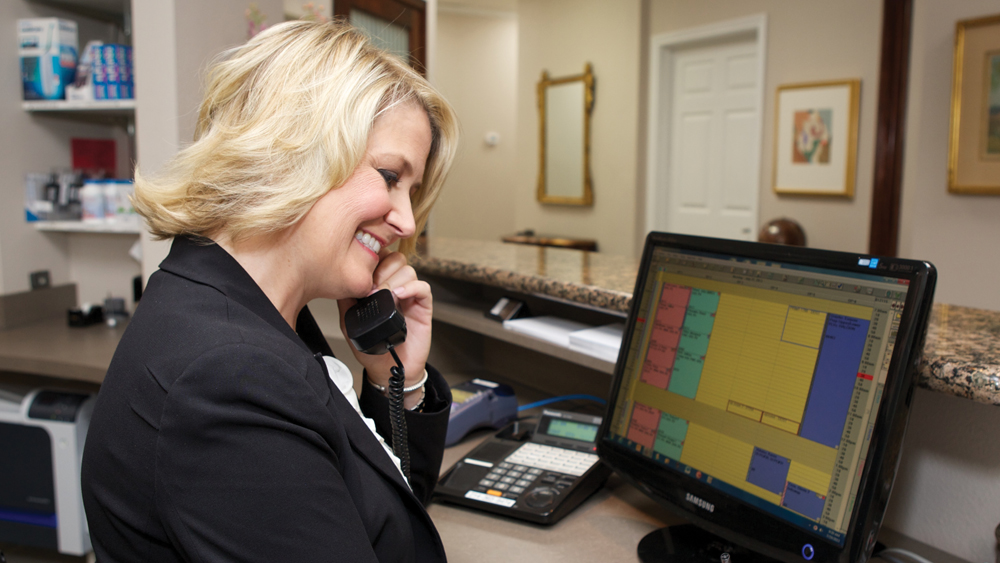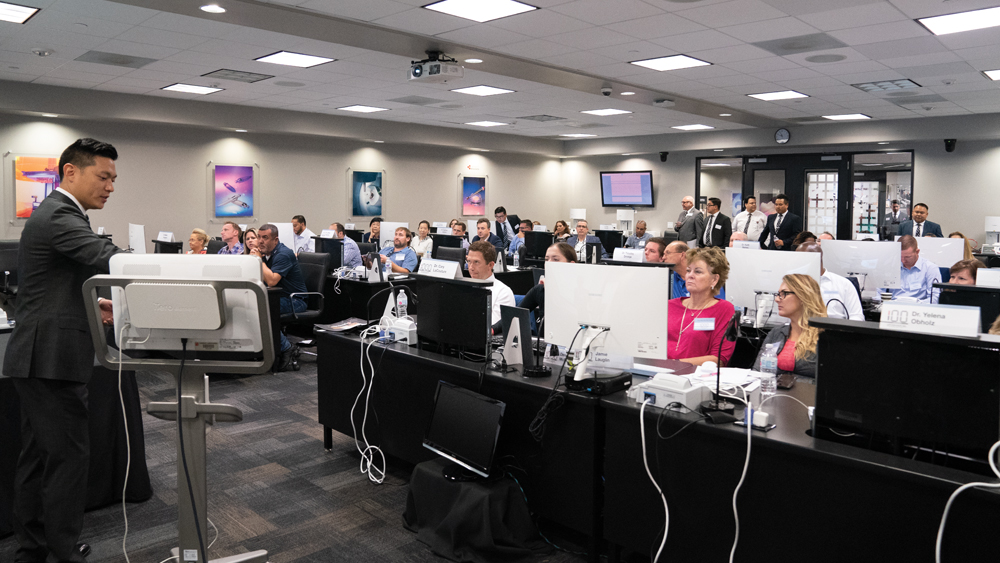New Technology: Practice Disruption or Increased Production?

When I visit dental offices, I often see expensive equipment, like lasers, being used to hang lab coats. It happens all too often that a significant piece of technology is purchased, only to be forgotten because the motivation for its place in the practice quickly waned when faced with the next busy Monday morning. The hope was that the investment would begin paying for itself quickly, but new technology is often met with resistance, frustration and little, if any, use at all.
How can you avoid this and make certain that your investment will generate sufficient returns and be embraced by your staff? At Jameson, we help doctors successfully navigate these exact business decisions. We recommend that doctors use four strategies before they make any significant investments. These strategies will help you integrate new technology into your workflow and get the most out of your investment.
1) YOU MUST HAVE TEAM BUY-IN
You have a vision in place for your practice. You know the type of quality dentistry you want to provide and how you want to provide it. The question is, does your team know your vision and are they on board with it? The same question needs to be asked about any investment in new technology that you are introducing into your practice. The truth is, if you don’t have buy-in from your team for the implementation of new technology, it will be difficult to integrate it into your workflow. You may be reflecting right now on the scanner, camera, laser, mill, or any particular piece of technology you purchased that failed to make an impact in your practice or was never used. How do you effectively engage your team to embrace and integrate the technology into your practice?
An effective strategy to bring your team on board quickly is to involve them in the purchasing decision from the beginning. What technology are you considering investing in soon? Identify the members of your team who would be involved in using it, and involve them in the product demonstrations and research. Allow them the opportunity to be a part of deciding which device to purchase and why. Owning part of the decision will give your team a greater desire to see its implementation succeed — more than if the decision were made for them without their role or opinion taken into consideration.
Let’s say you are considering investing in a laser for your hygiene department. Communicate in clear terms to your entire team how and why this investment helps you progress toward your ideal practice vision. Include your hygienists in the product demonstrations, in hands-on courses and in the final decision of which product you purchase. Let them assist you in mapping out how they will train themselves and utilize the tool. Inviting them into the decision-making process gives them a stronger sense of ownership and a higher level of enthusiasm for the new technology, which increases your ability to incorporate the tool into your practice to generate growth and a return on your investment.
Clinical research supports this idea. According to Dr. Charles Stangor in his book “Principles of Social Psychology,” groups tend to find implementation easier when decisions are made together. He states that group decisions are perceived as fairer than those made by individuals. Achieving buy-in can lead to a stronger sense of ownership and, ultimately, success of the tool.

To ensure your team embraces new technology, bring them into the decision-making process from the start.
2) TRAIN UP TO LEVEL UP
It is critical to prioritize training time for your new technology. If you don’t make time to train yourself and your team in the early months of implementation, it is less likely you will feel confident in the use of the tool and its place in your practice. You have to set your team up for success. Dr. John Jameson states to this day that if you are going to invest in technology for your practice, please invest in the training for your team as well.
For example, our team at Jameson has recently taken the plunge and invested in brand-new company-wide software. The learning curve has been steep. But early on, we invested a significant amount of time in training with the software company’s trainers so that we were set up to succeed instead of struggling in the deep end, trying to figure it out along the way. Change is difficult and doctors must give themselves the space and grace necessary for these tools to become fully optimized in their practice. Invest the time at the beginning to build your team’s competency and confidence. You will be glad you did.

Included with the purchase of the glidewell.io™ In-Office Solution, doctors and their team members receive training in two phases: at the dental office during installation and, later, with Glidewell Clinical Education in Newport Beach, California.
3) BEWARE OF INEFFECTIVE SCHEDULING
It is important that you constantly monitor the effectiveness and efficiency of your new technology from the beginning. To do this, create a clear system of analysis for every step of the procedures that will utilize the new technology. These time and motion studies will give you an estimation of how much time your appointments or procedures will consume using the new technology. Your scheduling coordinator will then be able to block out the correct amount of time and avoid scheduling overlaps and inefficiencies.
Motion studies also give your team a clear map of how the daily appointments and procedures will operate with the new technology and enable your staff to become confident in adopting the technology quickly.
You do this by:
- Creating a clear procedure analysis of all the procedures the technology will be involved in for everyone to follow.
- Conducting regular time and motion studies to give your scheduling coordinator the information they need to block out the correct amount of time.
In Figure 1, you’ll see an example of a time and motion study document for a single-appointment crown procedure using the glidewell.io In-Office Solution. Mapping out the steps in the procedure and the time required for each one gives you an accurate idea of how much time you need to reserve for the procedure. It also informs everyone on the team of their responsibility and role with this new tool. As you and your team gain competence with the fastmill.io™ In-Office Mill, you will want to repeat this exercise at a later date to measure your time again and see if it has changed. If it has, you can make adjustments to your scheduling to keep your practice running efficiently and your patients happy.
As you grow more accustomed to your new technology, proceed at a comfortable pace that works best for you and your team. Make sure you schedule sufficient time for your appointments that require you to use your new technology. Give yourself time to adjust to the learning curve so that everyone involved is happy with the experience and the result, especially your patients. If you consistently run time and motion studies in the early months of using your new technology, you can adjust your scheduling accordingly as your skill and efficiency improve. Eventually, you will find a consistent amount of time that you can use to block out your schedule with confidence. Until then, stay conservative, patient and persistent.

Figure 1: Motion studies give you visibility into how your new technology impacts your workflow down to the minute.
4) DON’T FORGET TO SPREAD THE WORD
If you invest in an exciting piece of new technology, you need to tell people about it. Otherwise, how will anyone know you offer this great new service, and how will you ever get to practice the type of dentistry you really want to be known for? Not only is it important to plan some marketing campaigns for your existing and potential patients, but it is also important that your team can confidently communicate the benefits of your new technology to your patients every day. You can encourage your team to discuss new technology with patients by:
- Having your team practice and develop their verbal skills at team meetings. Discuss how you are going to introduce and talk about the new tool or service at your daily huddles to keep it front of mind.
- Promoting your new technology on social media, in emails, on the signage in the office and anywhere you can. Remember the marketing “Rule of Seven,” which states that a person has to hear, see, feel and experience a message up to seven times before they act. You must consistently repeat your message. Repetition is the key to your current and potential patients understanding the value of this new technology in your practice.
- Continuing to hone your skills on how to educate your patients on this new technology. You have to give your patients the tools to talk about you. Ask your happy patients for referrals and reviews. They’ve experienced your new and improved care firsthand, and all it takes is for you to ask them to tell their friends and family about their experience.

Communicating with your patients about the benefits of your new technology, both verbally and through your marketing efforts and patient education materials, is vital to the success of the tool.
Your new technology can either be a disruption or an opportunity to streamline your practice, increase growth and see a return on your investment. It all comes down to how you and your team choose to implement it. Be proactive. Lead your team with clarity on how this benefits your patients, the practice and each of them as members of your team. Train them on the new technology, teach them how to adjust the schedule accordingly, and remember to let everyone know about your new technology or service. You are doing great things to stay at the forefront of dentistry, and that’s worth talking about to your patients and anyone who will listen. Putting these steps into action will help prevent your new investment from becoming a very expensive coatrack.
For more information on the practice-management consultation services offered by Jameson Management, Inc., contact Carrie at cwebber@jamesonmanagement.com or visit jamesonmanagement.com.



